Gwanghwamun – A Guide on What to Do in Seoul’s Cultural Center

When planning a trip to South Korea, especially Seoul, it’s almost impossible not to hear about Gwanghwamun. While the word itself refers to the largest gate at Gyeongbokgung Palace (which you can see in the image above), the name has now become synonymous with the area surrounding the most famous palace in Korea.
If you’ve already added Gwanghwamun to your travel itinerary – great! However, if you haven’t, I want to explain why Gwanghwamun is an essential place to visit during your stay in Korea. While there’s no doubt Gyeongbokgung is the crowning gem of the area, there’s so much more to Gwanghwamun that makes it worth exploring.
But why do I emphasise visiting Gwanghwamun so much? Well, the area is the cultural centre of the city. Where Gangnam epitomises the hyper-modernity of Seoul and Hongdae the student lifestyle, Gwanghwamun is the place to visit if you want to experience the rich culture of Korea.
If you’re interested in reading about Gyeongbokgung Palace instead of Gwanghwamun as a whole, please refer to this article on why you shouldn’t visit Gyeongbokgung. However, you’ll have to read the article to see why I recommend other palaces over the largest in Seoul.
With that said, let’s get started on why Gwanghwamun is a must-visit location in Seoul!
Where Is Gwanghwamun?
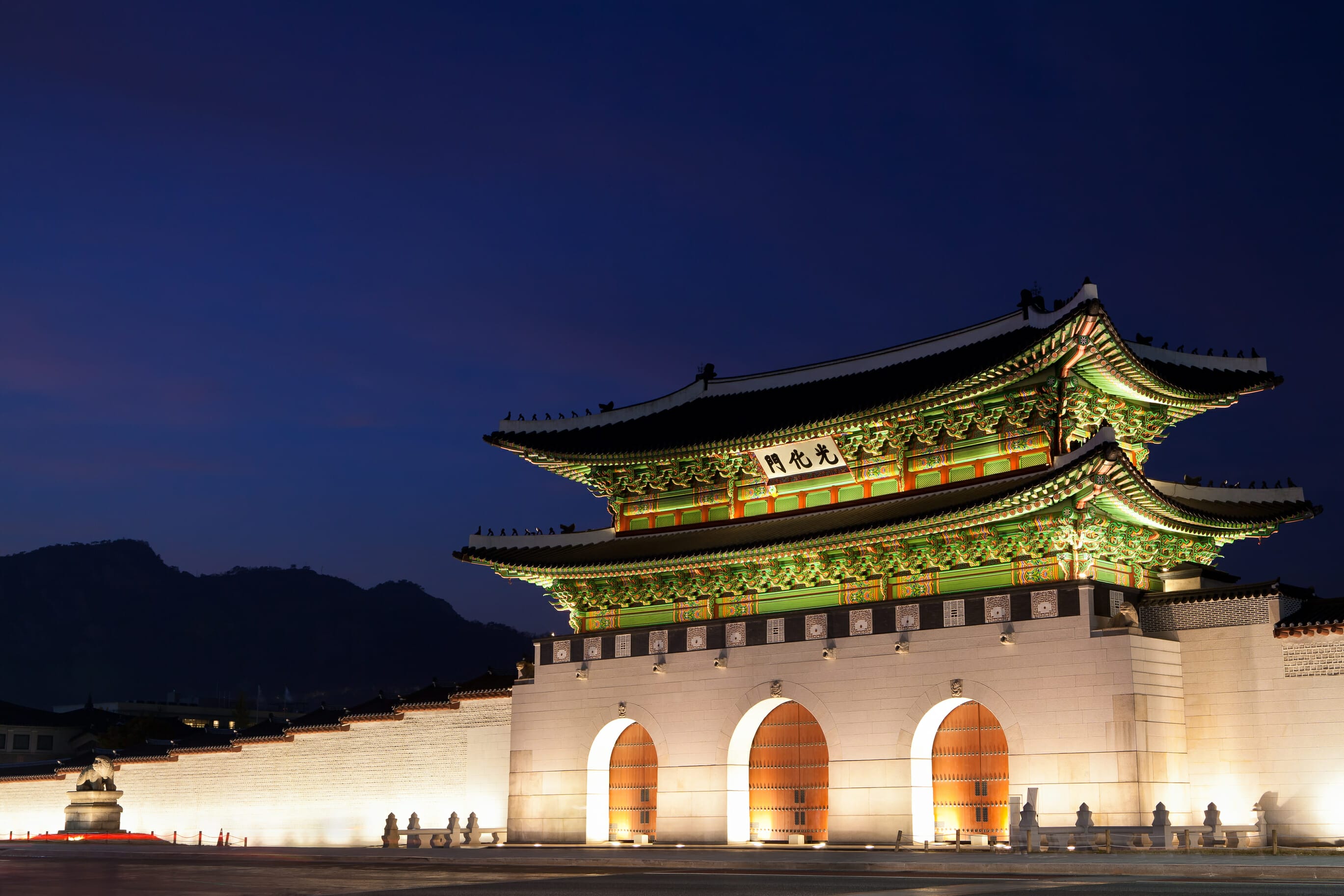
As I mentioned in the introduction, the name Gwanghwamun was originally the name of the main gate of Gyeongbokgung Palace. The name has since become more widely used as Gwanghwamun Plaza, which sprawls in front of the palace inherited the name. Since then, the word ‘Gwanghwamun’ has been used even more broadly to refer to the palace’s surrounding area.
Gwanghwamun is located in Jongno-Gu (one of Seoul’s oldest districts) and sits between Anguk Station on the west, Gyeongbokgung Station on the east, and Cheonggyecheon Stream on the south. To the north, you’ll find the palace with mountains flanking.

Gwanghwamun is convenient to visit because it’s centrally located in Seoul’s northern half. It’s located within 30 minutes of Hongdae, Myeongdong, Dongdaemun, and Namdaemun Market. Therefore, if you’re visiting any of these areas already, it’s worth detouring to see Gwanghwamun!
How to Get To Gwanghamun
To reach Gwanghwamun, the most straightforward method is to take the Seoul Metro to the aptly named Gwanghwamun Station on Line 5 (purple). This station lives below Gwanghwamun Plaza, and it’s the most central station in the area.
However, if you would prefer to cut down on walking, the Gyeongbokgung Station on Line 3 (orange) will take you almost directly to the palace. On the other hand, if you want to explore Cheonggyecheon Stream, Jonggak Station on Line 1 (blue) will provide the easiest access.
There are also tens, if not hundreds, of busses that pass through the area. I recommend using Kakao Bus if you want to take a bus to Gwanghwamun, as it’s impossible to list every bus route here!
If you are travelling as a group, prefer comfort, or don’t mind spending a bit more, taking a taxi to Gwanghwamun Plaza is also an option. If you’re visiting Gwanghwamun from somewhere in northern Seoul, expect the ride to cost 5000-15000 KRW (after the recent price changes). If you’re visiting from south of the Han River, expect to pay 15,000-30,000 KRW.
Why You Should Visit Gwanghamun

Okay, now that I’ve talked up the area so much, I wouldn’t blame you for asking why it’s actually worth visiting. What makes Gwanghwamun so special? Even further, what makes Gwanghwamun a ‘Must Visit’ (which I would classify it as!)?
Simply put, it’s the cultural centre of Seoul, and I firmly believe that travellers should always try to experience and learn about the culture of the countries we visit. Learning about history and culture doesn’t need to be boring, which is why I highly recommend Gwanghwamun. There’s so much to see and do, and it’s a thrilling location to explore.
In Gwanghwamun, you will find the obvious attraction of Gyeongbokgung. However, if you look further, you will discover many other attractions in the location or within walking distance. Here are a few highlights:
Gyeongbokgung Palace

Of course, Gyeongbokgung has to take first place on this list. Although this is probably already on your itinerary, if it isn’t, it’s worth a visit!
Although I prefer other palaces in Seoul, there’s no denying that Gyeongbokgung provides the best all-around experience for visitors. While the palace is often very crowded, Gyeongbokgung is well-suited for travellers as it has museums, gardens, and even cafes inside.
Admission to Gyeongbokgung Palace is between 1500-3000 KRW, depending on age. For children under six and seniors over 65, admission is free. However, if you’re wearing a hanbok, the entrance fee to the palace is waived! This awesome incentive means many visitors to the palace will be wearing Korea’s traditional garments.
Renting hanbok for a few hours is affordable, and you can find rental fees for as low as 7000 KRW per hour. Just remember that to get free entry to Gyeongbokgung, all members of your group will need to be wearing the clothing. Of course, if you have young children or are travelling with seniors, their entry fee will be waived regardless.
Anyway, back to the palace itself! Gyeongbokgung is massive. If you aim to walk 10,000 steps per day, you can easily achieve that with just a couple of hours at the palace. What you don’t see from the front gate is the extensive garden and dwellings that extend behind the palace. While some of these are off-limited to visitors, the majority are accessible.
If you are visiting near 10 am or 2 pm (except on a Tuesday), you can witness the changing of the guards at the front gate (the original Gwanghwamun!). This is a cool ceremony worth seeing, but prepare to get there at least 15 minutes early, as the best spots will likely be taken quickly!
Cheongyecheon
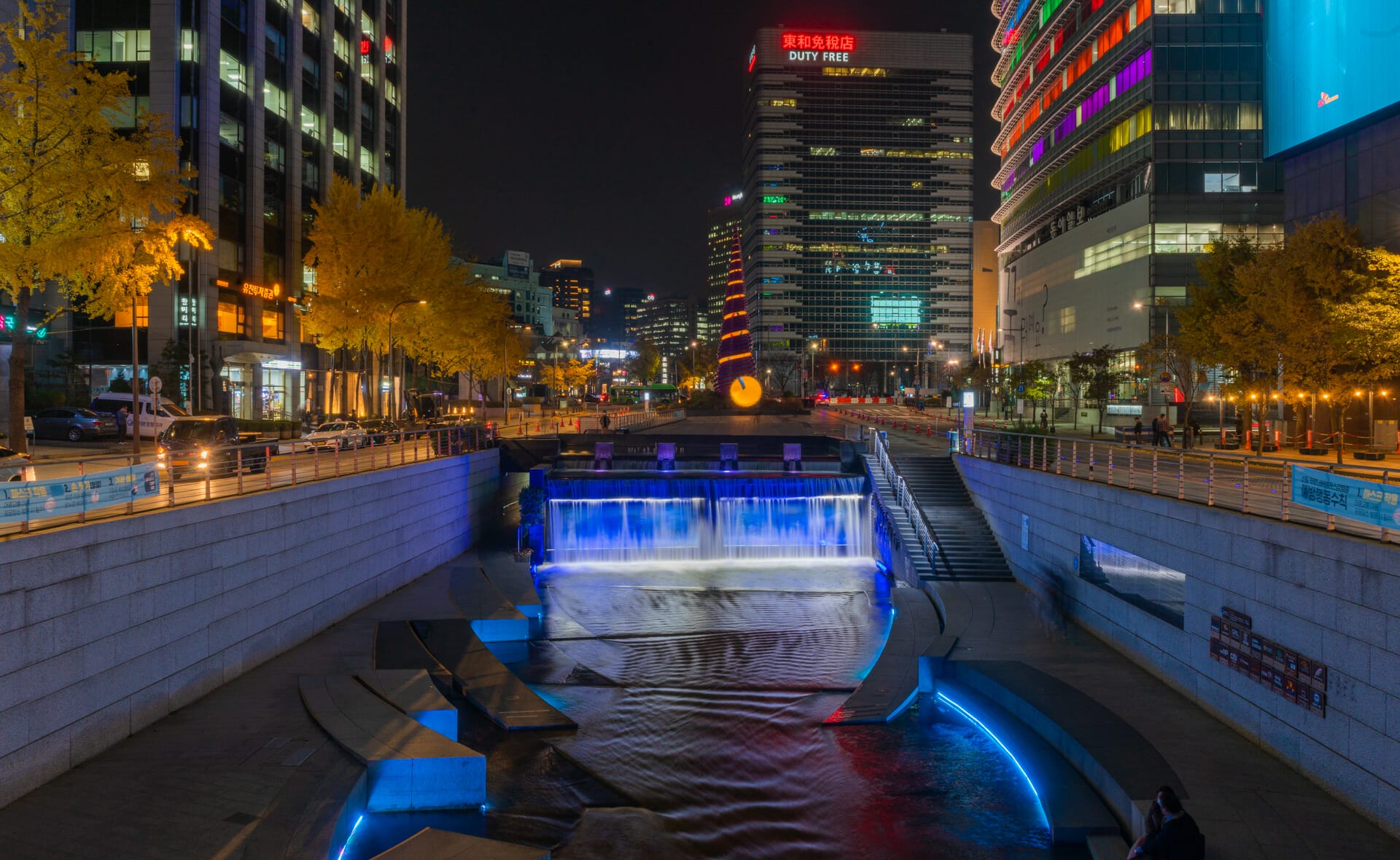
Cheonggyecheon is a small stream running through the centre of Seoul. The stream starts in Gwangwhamun, and you can walk to the beginning of the stream from the palace. The walk from the palace gates to the stream is only around 10 minutes (although you will need to cross a fair number of roads) and is entirely flat.
Cheongyecheon is likely not a stream like you are expecting. Running through the centre of one of the largest cities in the world, the stream is very urbanised, and you can quickly tell it forms the identity of the neighbouring streets and suburbs.
The stream will be in one of its many different forms depending on when you visit. In spring, the trees and other flora on the stream’s banks will be coming to life, and you’ll be able to see some blooming if you are visiting during the right time. In summer, the stream’s banks are lush and life-filled. The stream gradually turns from greens to beautiful yellows and reds in fall. Finally, in winter, the steam will (hopefully!) be snow-flanked.
While I recommend visiting the stream regardless of the season, there’s no denying that it’s at its peak during spring and summer. During these seasons, there are countless events held at the stream, which begin with the spectacular Cheongyecheon Lantern Festival.
The stream is always free to visit, and the best time to visit is generally during the early evening. The area is very well-lit, and many cafes, bars and restaurants are nearby. As such, it is a great place to visit during sunset or even after the sun has descended below the horizon (especially if the lantern festival is happening).
Insadong

If you’re looking to go shopping for traditional Korean goods or want to try traditional Korean cuisine or drinks, Insadong is the best place to do so. While the area is clearly tourist-focused, there is no better place for gift shopping in Seoul.
Insadong’s main attraction is the long street (Insadong street or 인사동거리) that runs from south-east to north-west. If you walk this street from the south, you can enjoy some shopping, and by the end of the street-long journey, you’ll end up just one block away from the front gates of Gyeongbokgung Palace!
Now, since Insadong is highly-trafficked, don’t expect the prices here to be low. While it’s absolutely possible to find affordable gifts and souvenirs, the prices here are far from cheap. As such, I recommend shopping around a bit to find the best prices, as there will be some variance between sellers. If price is not an issue, feel free to buy whatever catches your eye!
My recommendation for you in Insadong is to try a traditional tea house while you’re in the area. These tea houses are plentiful, but they’re usually located on side roads and can sometimes be quite elusive. In Insadong, you’ll find a good variety of these traditional buildings, but if you’d prefer a more authentic feel, Bukchon Hanok Village also has a range of tea houses!
While you’re in Insadong, make sure to check out 쌈지길 for shopping. This outdoor shopping centre is located on the main street of Insadong, and it houses a range of stores selling gifts and souvenirs. If you are in a rush to get some items to remember Korea by, this small mall is a great place to find everything you need.
Bukchon Hanok Village
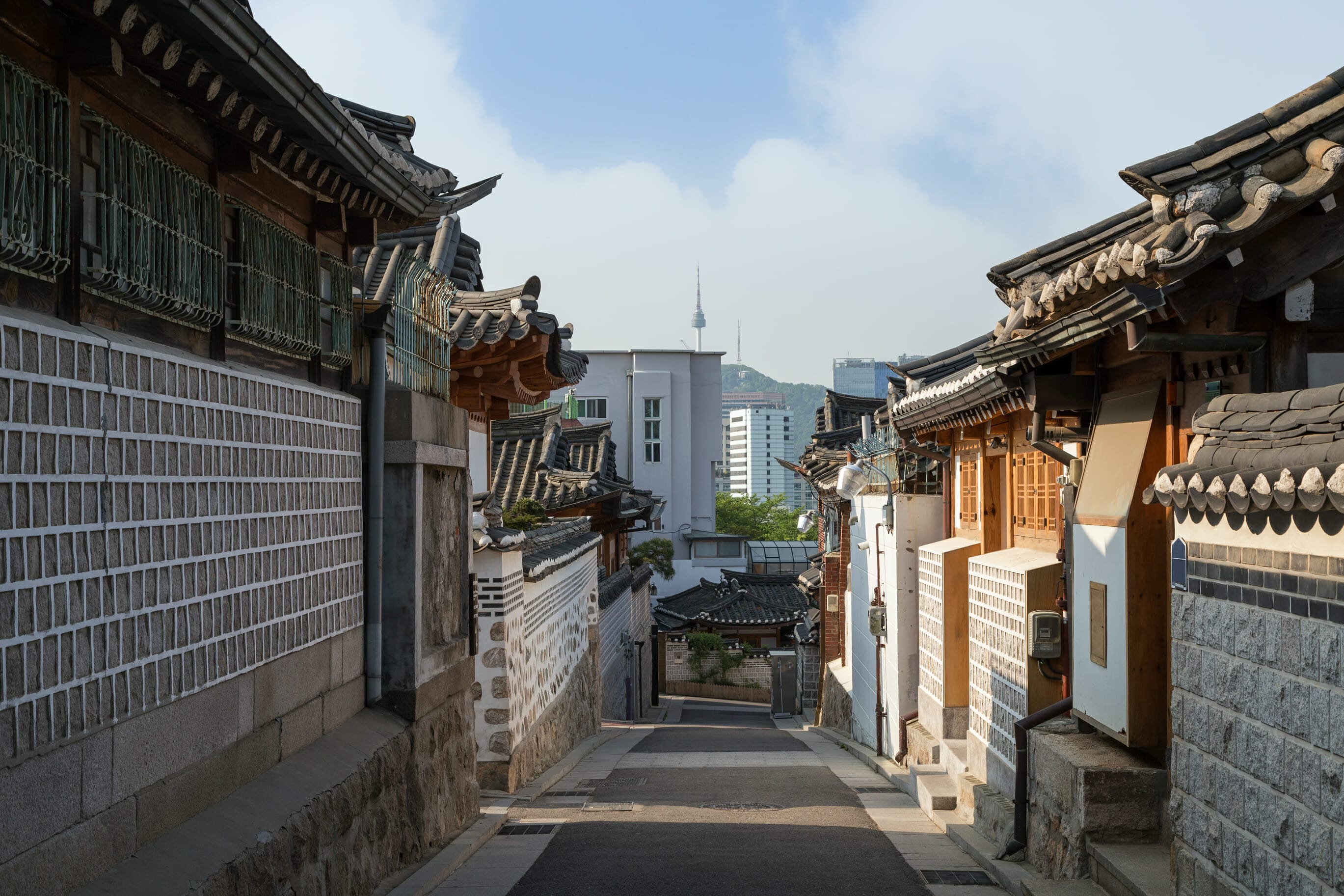
If you’re wondering what the streets of Seoul would have looked like 100 years ago, Bukchon Hanok Village is a highlight of the Gwanghwamun area. Hanok is Korea’s traditional housing form, and Bukchon comprises hundreds of these traditional houses.
Bukchon is located on a hill north of Insadong and east of Gyeongbokgung. What makes the area so great is how all three of these areas can easily be visited in the morning or afternoon. Of course, with the number of attractions in each, you should spend longer in this area!
Bukchon is located on a hill, and the walk can be steep in places. With that said, it’s absolutely worth visiting because Bukchon has some of the most unique scenery in the otherwise hyper-modern city of Seoul.
Bukchon can attract a lot of crowds, so I recommend visiting in the morning. You will see very few crowds if you visit early – perhaps around 8 or 9 am. Towards noon, the crowds will increase and won’t subside until after the sun goes down. While it’s still worth visiting during busy times, you will get a more peaceful journey and better photo opportunities during the earlier hours.
Besides the beautiful houses, Bukchon has a range of attractions worth visiting. There are souvenir and gift stores, traditional tea houses and restaurants, and a few galleries and small museums in the area. If you’re interested in hiring hanbok, you’ll also find countless hanbok rental stores around here.
National Museum of Korean Contemporary History
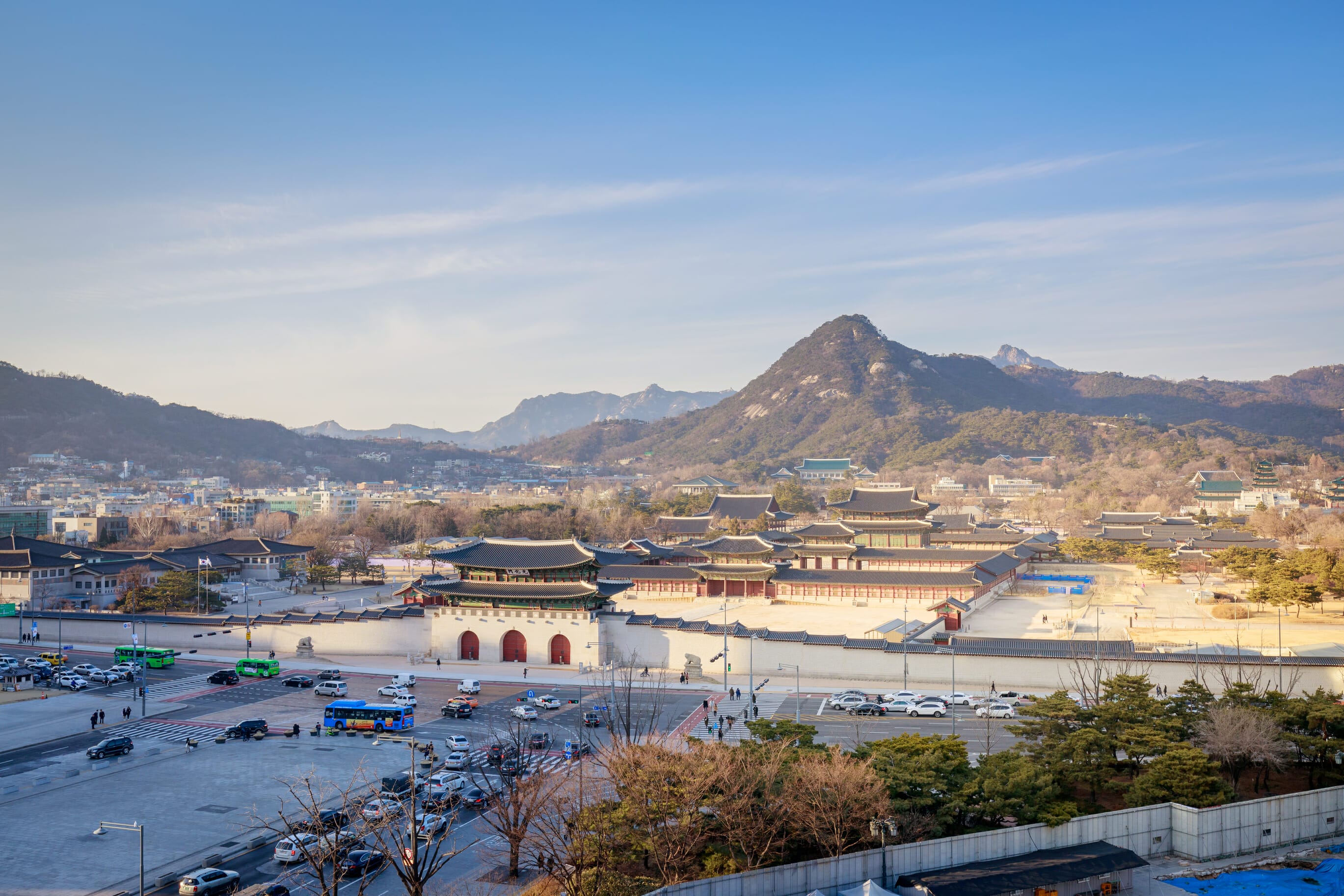
Rooftop view from the National Museum of Korean Contemporary History
Located in Gwanghwamun Plaza, only a few minutes walk from Gyeongbokgung Palace, the National Museum of Korean Contemporary History opens daily at 10 am and has free admission for all age groups. Although you can easily spend an afternoon in the museum’s four information-packed halls, visiting for a shorter period to explore the wings that interest you is possible.
As the museum focuses on Korean contemporary history, you will find the halls at the National Museum of Korean Contemporary History filled with artefacts from the last 200-300 years of Korean history.
If you want to learn about older periods of Korean history, you can also do that in the Gwanghwamun area, as Gyeongbokgung Palace itself has a couple of museums within its grounds. However, there is no better place for more modern history than the National Museum of Korena Contemporary History.
This museum’s main focus is on the forming of the Republic of Korea (ROK). The halls are set up to explain how the ROK has formed and the basis on which it was created. Due to this, the museum’s permanent exhibitions include ‘Prelude to the Republic of Korea’, ‘Foundation of the Republic of Korea’ and more.
The National Museum of Korean Contemporary History is well worth visiting, and I recommend adding it to your Gwanghwamun itinerary when you visit. After all, if you’re already in the area what reason is there not to visit a museum with free admission?
Gwanghwamun Plaza
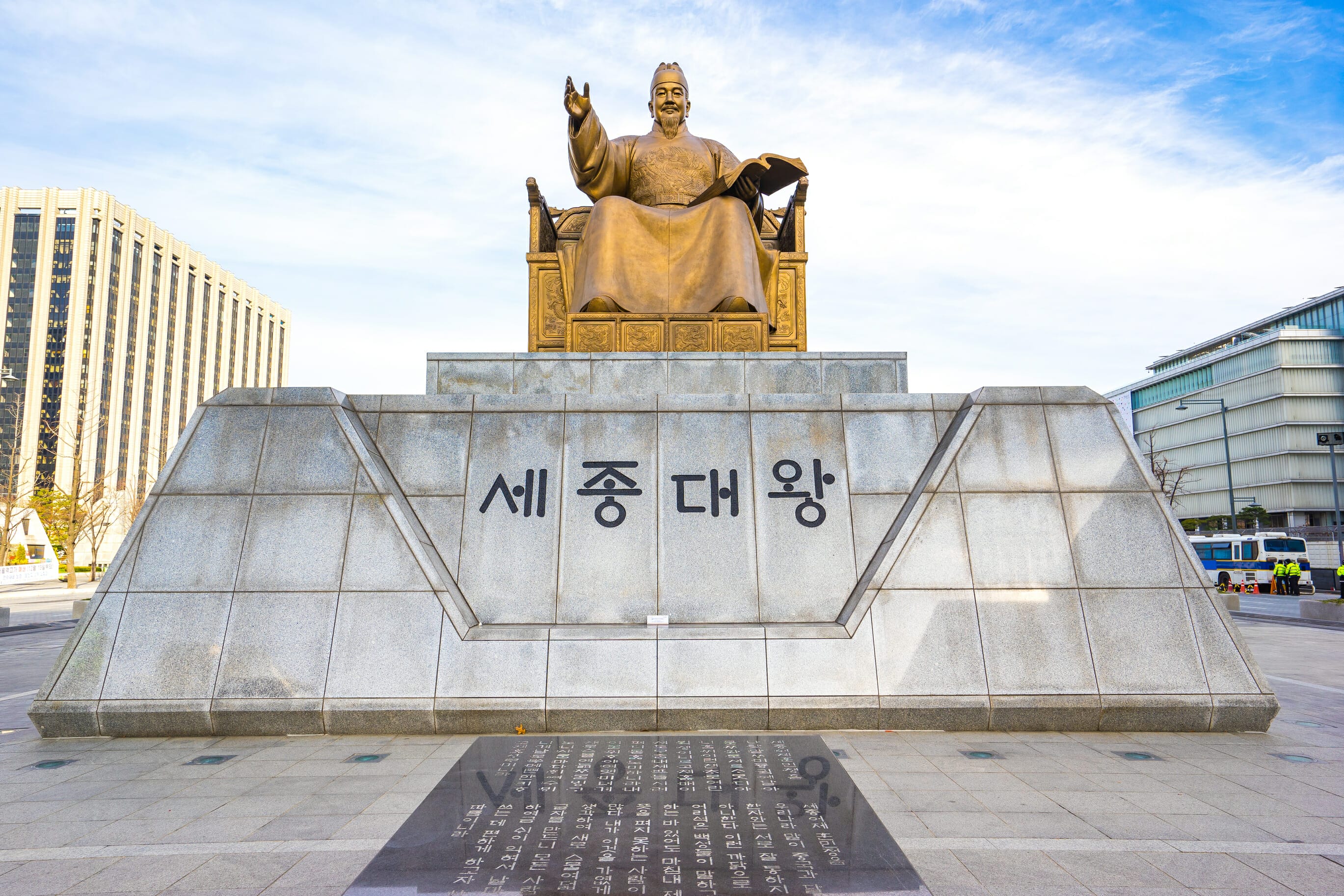
Gwanghwamun Plaza is the name given to the large, open area lying directly in front of the intimidating yet beautiful gates of Gyeongbokgung Palace. Only a couple of years ago, the plaza was rebuilt, and it now has an entirely different look and feels from the previous plaza.
The Plaza itself is mostly an open area with little in the way of attractions. A few hundred metres from the palace, you will find a statue of Admiral Yi Sun-sin – a famous Korean admiral who led the country to multiple victories over the Japanese with the ingenious turtle ships.
Further down the plaza, closer to the front gates of Gwanghwamun Gate, you will also see a gold statue of King Sejong, Korea’s most highly-regarded king. During the Joseon Dynasty, King Sejong and a group of scholars created the current Korean alphabet – Hangul. Among other reasons, this has led to King Sejong becoming revered even in contemporary Korea.
Although these two statues are absolutely worth witnessing, the Gwanghwamun Plaza itself has little else in the way of attractions. However, the buildings that flank the plaza make the area worth exploring. Although Gwanghwamun is one of Seoul’s many CBD areas, you will also find many (not so hidden) gems around here.
Plentiful cultural activities, such as museums and galleries, exist to explore. On top of this, the best bookstore in Seoul lives just below the plaza. Accessible from Gwanghwamun Station, Kyobo is a bookstore with many books and other products – in English, Japanese, Chinese, and Korean!
While you won’t find many restaurants or cafes on the streets directly bordering the plaza (except for Starbucks), you will find many dining and drinking options if you explore a few streets back from the main plaza!
Jogyesa Temple
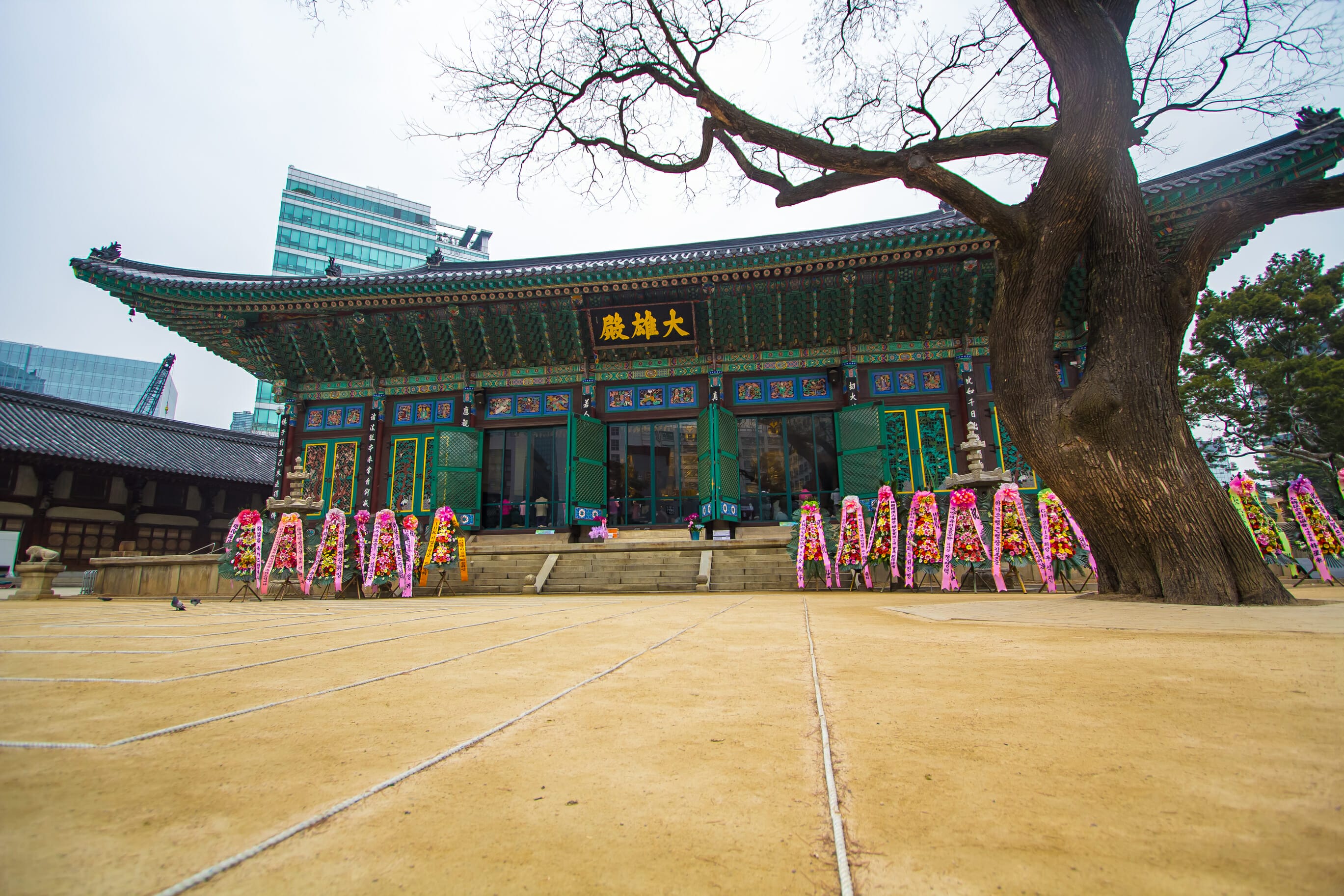
Jogyesa is a beautiful Buddhist temple located only a few hundred metres from Gwanghwamun Plaza and Gyeongbokgung Palace. The temple is considered the centre of Seon Buddhism in Korea, and it’s stood in its location for hundreds of years.
Initially built in 1395, the original temple was built around the start of the Joseon Dynasty. While not originally built to be the headquarters of Seon (Zen) Buddhism, it began to gain importance during the Japanese occupation of Korea. The temple became a stronghold of Zen Buddhism and, in 1954, was recognised as the centre of the Jogye order of Buddhism.
Although the temple is always open – even during the late hours of the night – it’s worth visiting in the early evening if possible. During these hours, the temple’s lanterns are ignited, and the temple takes on a stunning appearance.
If you are visiting in the time around Buddha’s Birthday, the temple is even more beautiful as it will host thousands of lanterns. The celebrations will last for three days, although there will often be extra lanterns in the palace for a longer period of time.
With Buddhism being a core part of Korean history and culture, Jogyesa Temple is a highlight worth visiting. If you’re looking to learn about Buddhism, there’s no better place to do so. On the other hand, if you just want to explore one of the unique places in Korea, Jogyesa is just a stone’s throw from Gyeongbokgung.
Deoksogung
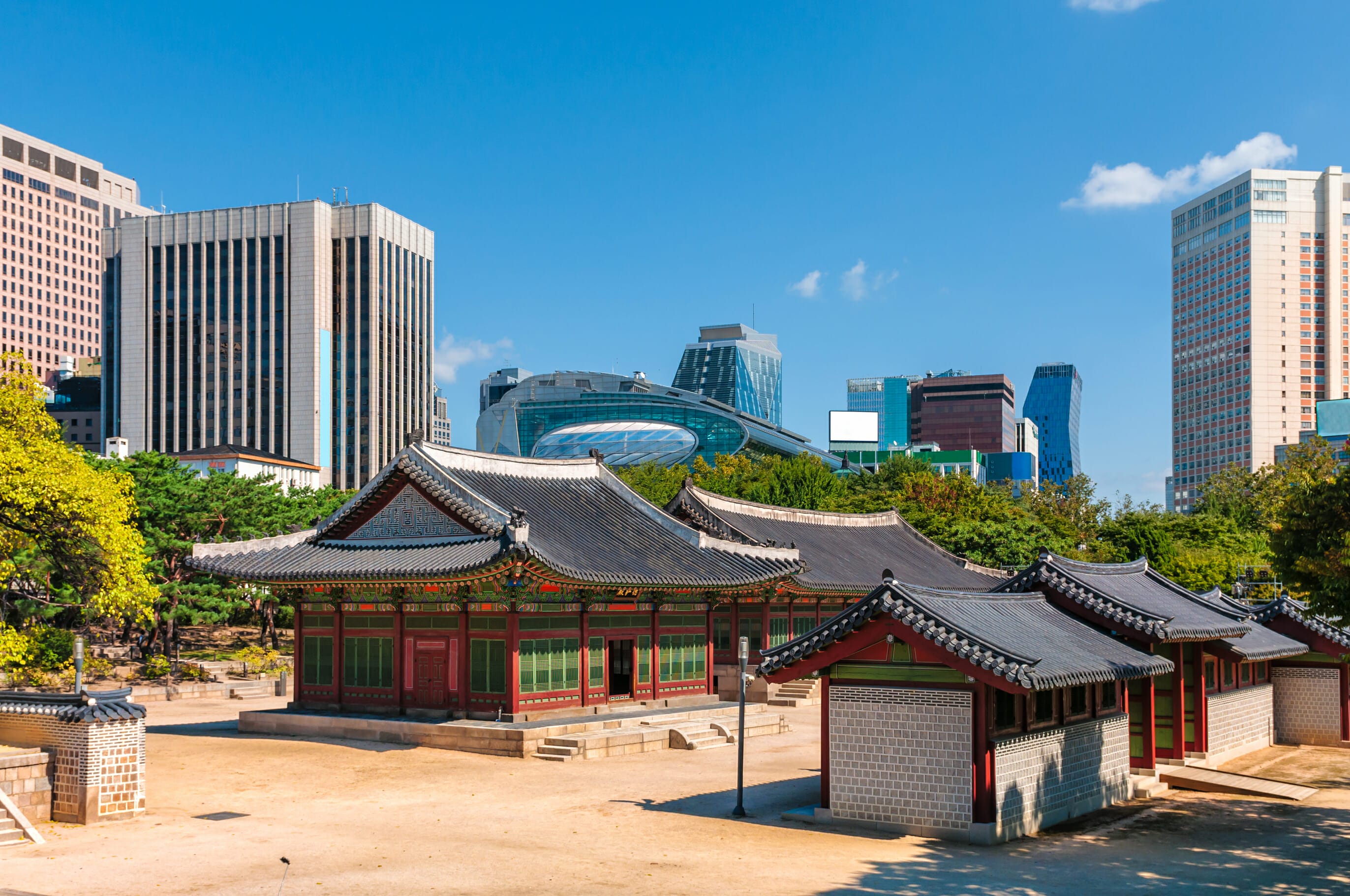
Okay, I’ll admit that Deoksogung is slightly pushing the boundaries of the Gwanghwamun area. However, this second palace is still located within easy walking distance from Gyeongbokgung Palace, and it’s well worth a visit if you are looking for a slightly less crowded palace.
Deoksogung is a second Korean palace on a much smaller scale than Gyeongbokgung. Since it’s also significantly less popular than Gyeongbokgung, it’s vastly less trafficked, although it’s still quite busy. Unfortunately, it also lacks the extra attractions such as the museums the larger palace hosts.
Since Deoksogung is less of an attraction, you will also find the entry fees here are much cheaper at only 500-1000KRW per entrant (again, depending on age). On top of this, some of the highlights at Gyeongbokgung, such as the changing of the guards, are also viewable here!
Also, similarly to the larger palace, you can get free entry to Deoksogung if you wear Korea’s traditional clothing – hanbok. Please keep in mind, however, that every member of your group will need to have the traditional garments donned. If you’re looking for the whole experience, you can also take tours of the palace at 10 am and 2 pm every Tuesday-Sunday. These tours are free but require a reservation.
I recommend visiting both palaces – Gyeongbokgung for the museums and learning and Deoksogung for photos. Since there are fewer people at this smaller palace, it’s a far better venue for taking photos. On top of this, I also believe it’s a prettier palace with more stunning photo spots.
National Folk Museum of Korea
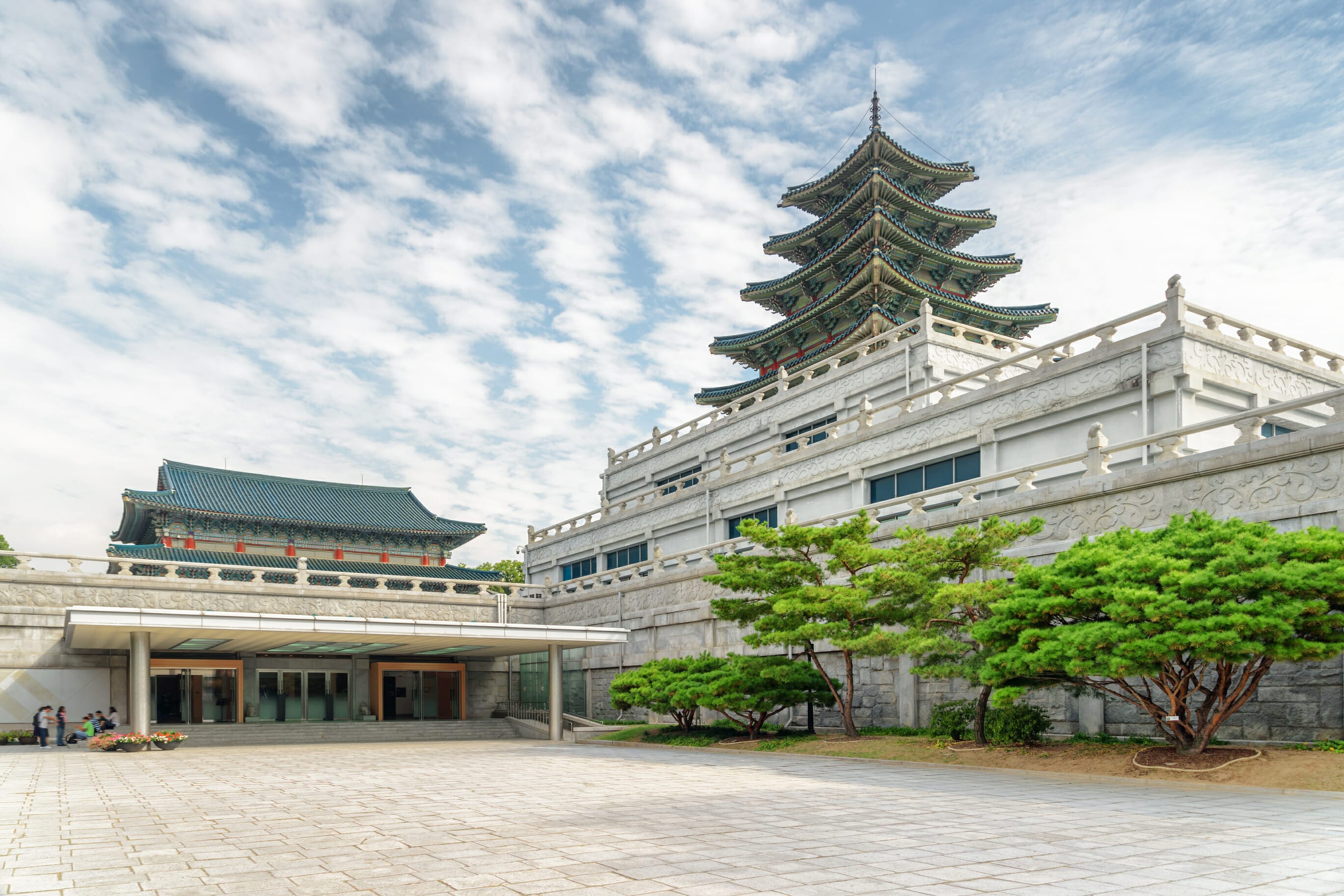
This is one of the biggest highlights of the Gwanghwamun area and why I like to visit Gyeongbokgung occasionally. The National Folk Museum of Korea is located near the back of the palace (it’s located inside the palace), and unlike the National Museum of Korean Contemporary History, this museum focuses on history from times long ago.
The National Folk Museum of Korea has almost 100,000 artefacts split across three permanent exhibitions. The museum is unique because it features tools, ornaments, and other artefacts from as long ago as prehistoric times.
The museum covers everything from prehistoric times to the Joseon Dynasty, and for more modern history, you’ll want to head back to Gwanghwamun Plaza and the National Museum of Korean Contemporary History. Between the two, you can get a complete historical background of how Korea became what it is today.
If you have a ticket to Gyeongbokgung Palace (which you will need to enter!), entrance to the museum is free. With the lack of admission fees, there’s no reason not to visit and learn about Korea’s folk history!
Samcheong-ro
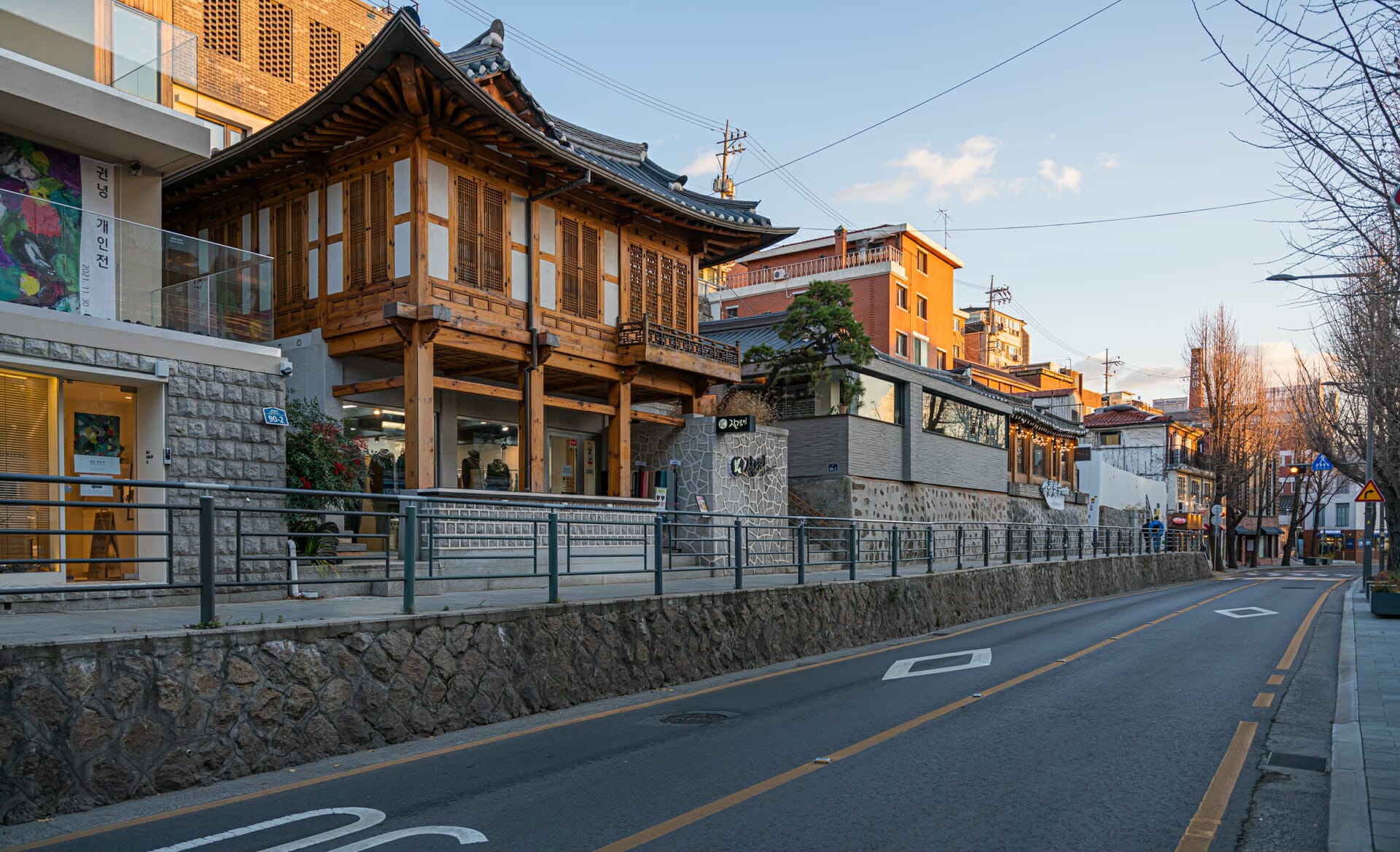
If you want to have a taste of Korean history and culture while also enjoying a delicious range of beverages, Samcheong-ro is the place you’ll want to visit. This street is located behind Gyeongbokgung Palace and is full of high-end cafes and restaurants.
Don’t let the words ‘high-end’ turn you off the area. The prices are higher than you’ll find in other areas around Seoul, but they’re not extreme. Furthermore, since you’ll likely only be visiting the area once, it’s worth spending a bit to enjoy the cafe’s luxurious atmosphere.
What makes the cafes along Samcheong-ro so unique is they are housed within traditional Korean hanok buildings. Despite these originally being traditional buildings, the cafes in this area have put a contemporary twist on the special form of architecture.
This gives the cafes a truly unique feeling – from the outside, they look traditional but still chic and hip. On the inside, they have a traditional feel while also being very modern and having a luxury feel.
It’s also worth noting that while the area features a ton of cafes and restaurants, these aren’t the only highlights here. You can also find galleries, small museums, gift stores, and more among the stunning buildings. All in all, it’s a place worth exploring!
Ikseondong
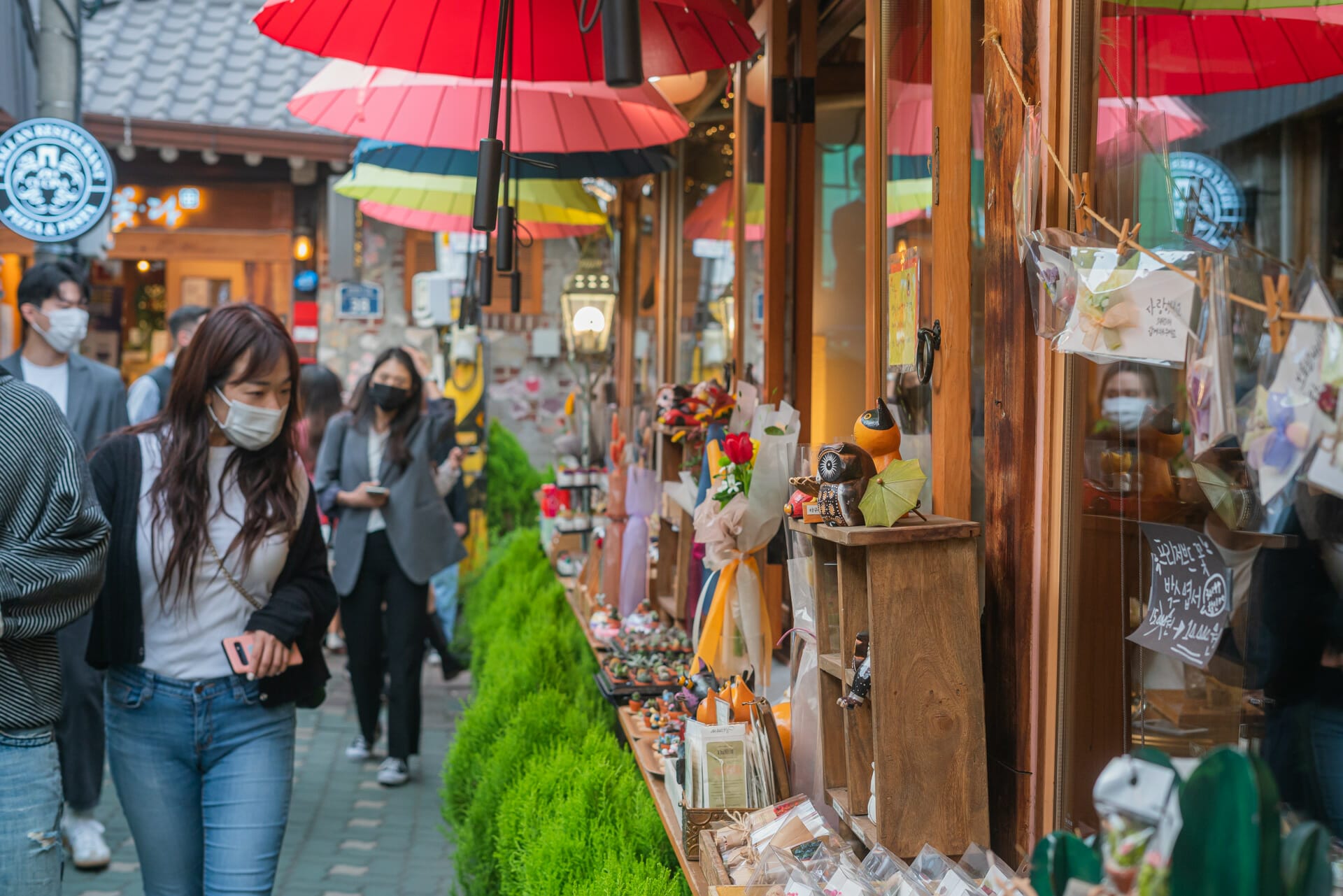
Located on the border of the Gwanghwamun area, Ikseondong is my favourite place in Seoul. This village is a traditional Korean hanok village, but unlike Bukchon, which feels traditional, Ikseondong is hip and trendy. This unique juxtaposition makes Ikseondong one of my favourite neighbourhoods in the city.
Ikseondong is known for cafes, restaurants, and bars – it’s also known for being quite pricey and attracting locals looking to enjoy a night out with luxury food and drinks. The prices in the area reflect this, so don’t expect a visit to Ikseondong to be cheap. Unless, of course, you just want to look around (which I still highly recommend!).
Ikseondong is located near Insadong and is a bit of a walk from Gyeongbokgung and Gwanghwamun Plaza. However, while the walk can take 20-30 minutes, it’s easy with no inclines or declines. Since you’ll be walking past some of Seoul’s oldest neighbourhoods, it’s also quite enjoyable!
Despite being known by locals, Ikseondong seems to be overlooked by most tourists, and it’s rarely visited. I’m not entirely sure why this is because it’s a must-visit for me. There’s something special about the combination of traditional and contemporary; Ikseondong exemplifies this.
Add Gwanghwamun to Your Itinerary!

If by now you’re not convinced why you need to add Gwanghwamun to your trip itinerary… Well, I’m not sure what I will do! Just let it be said; you will miss out if you don’t visit Gwanghwamun. Even if your trip doesn’t allow for much flexibility, I recommend heading to Gwanghwamun for whatever time you can spare – even if it’s only a few hours.
Although Gyeongbokgung is by far the largest (and busiest) attraction in the area, there’s so much else worth exploring. Gwanghwamun isn’t exactly a hidden gem or secret spot, but I feel like so few people make the most of the area. To me, this makes me feel like Gwanghwamun is often overlooked for the thrilling streets of Myeondong or the nightlife of Hongdae.
Don’t make the same mistake! Dedicate some time to enjoying Gwanghwamun and learning about Korean culture and history. There’s no better place in Seoul to find so much information packed so closely together, which makes Gwanghwamun such a highlight to me.
Gwanghwamun FAQ
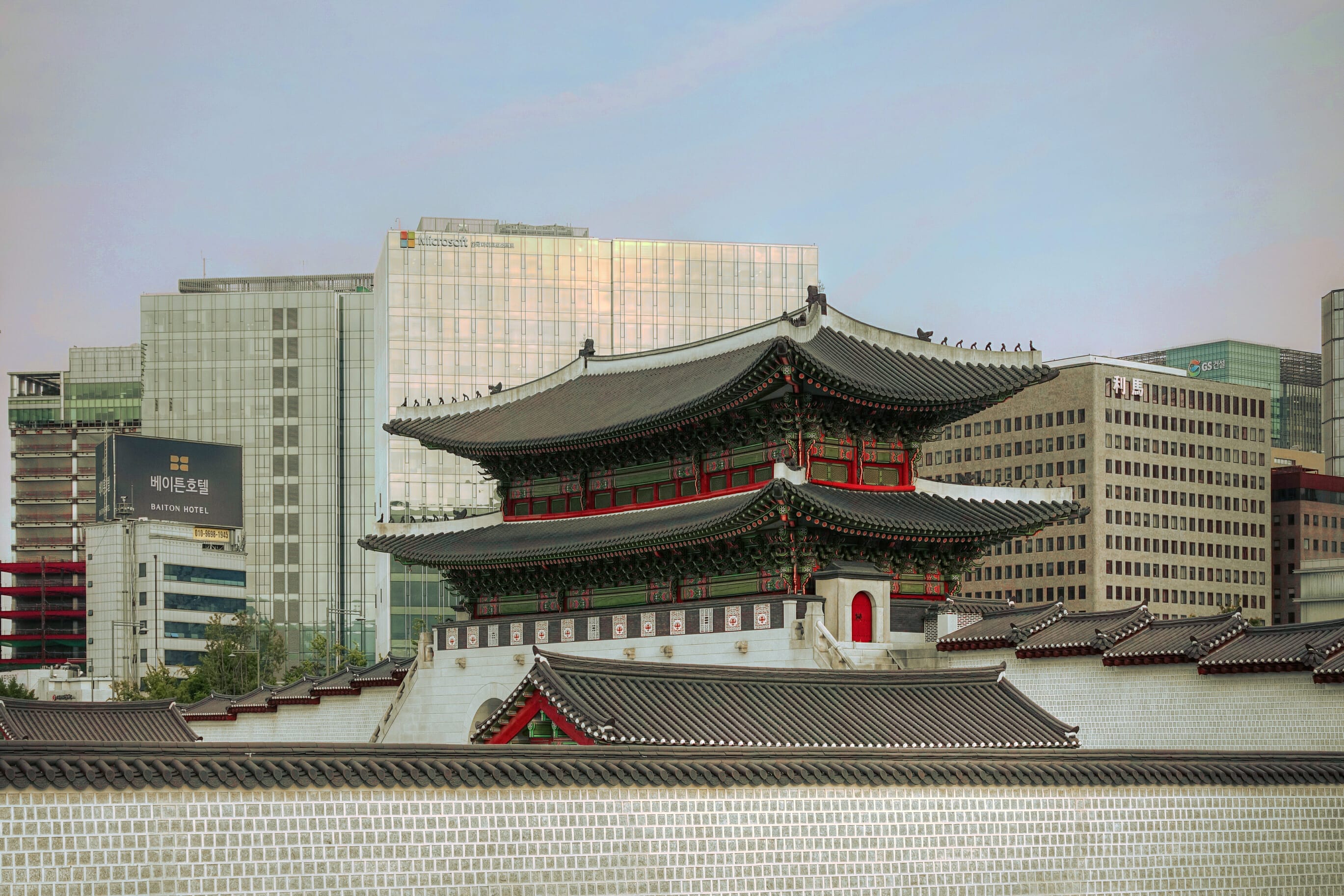
Where Is Gwanhwamun?
Gwanghwamun is located in northern Seoul in Jongno District. The closest station is Gwanghwamun Station on Line 5.
How Can I Get To Gwanghwamun?
If you want to take the train, you can take the Seoul Metro to either Gwanghwamun, Gyeongbokgung, Anguk, or Jongak Station. All of these stations are located in the same area, and the one you visit will depend on the order in which you want to visit the attractions in Gwanghwamun. There are also plentiful buses passing through the area.
What Is There to Do in Gwanghwamun?
There is so much to do in Gwanghwamun! If you’re interested in Korean culture and history, a few museums, such as the National Folk Museum of Korea, are worth visiting. If you’re looking for vistas, Cheonggyecheon and Gyeongbokgung Palace are must-visits. If you’d prefer a chill afternoon, check out the cafes on Samcheong-ro.
Why Should I Visit Gwanghwamun?
Gwanghwamun is worth visiting because it is the cultural centre of Seoul. There is no other area in the capital where you can find so many culturally significant attractions within proximity. On top of this, Gwanghwamun has some beautiful vistas, such as Cheonggyecheon.
Are There Free Attractions in Gwanghwamun?
Yes! Many of the museums have free entrance, and if you wear a hanbok, you can also get free entrance to the local palaces.
What Is Gwanghwamun?
Technically, the name Gwanghwamun refers to the front (and primary) gate of Gyeongbokgung Palace. However, the name is now often used to refer to the palace’s surrounding area.

Thanks for all your great tips and helpful info. I appreciate how you’re not doing it for your own personal glory like most on social media these days, but just to help those who aren’t fortunate to know Korea as well as you. Thanks!